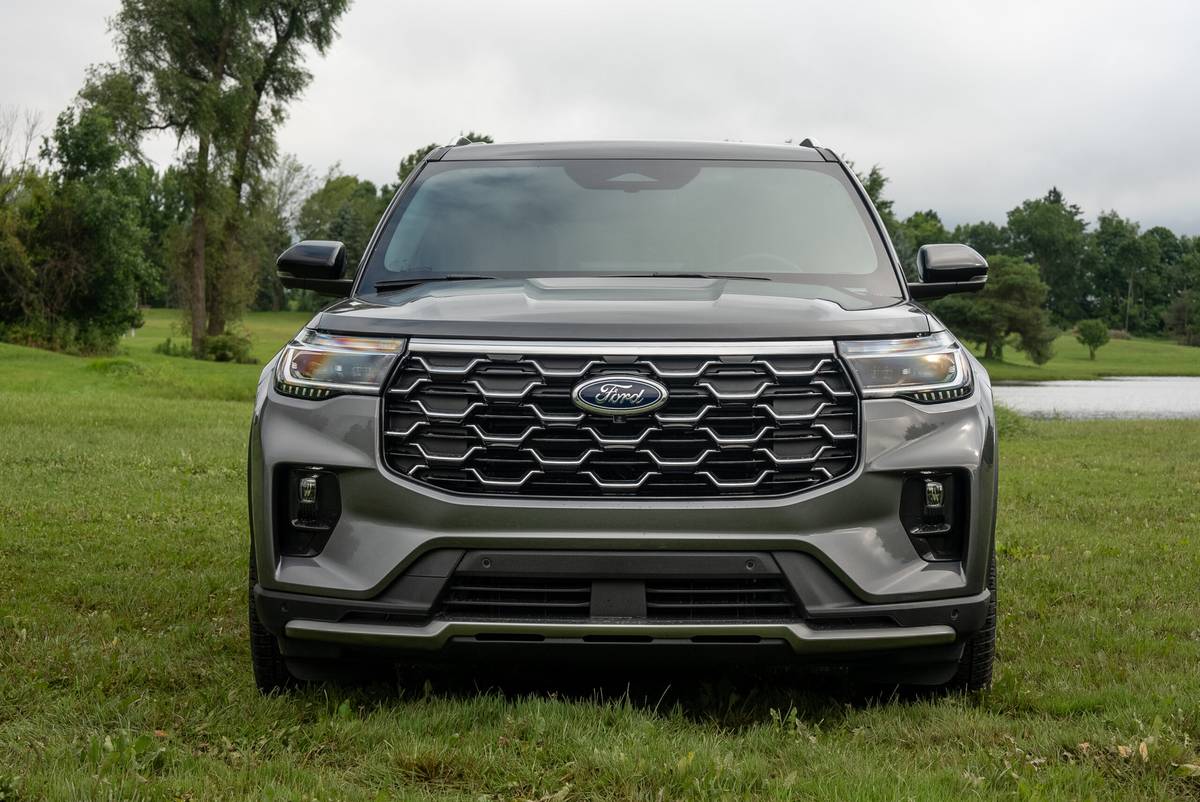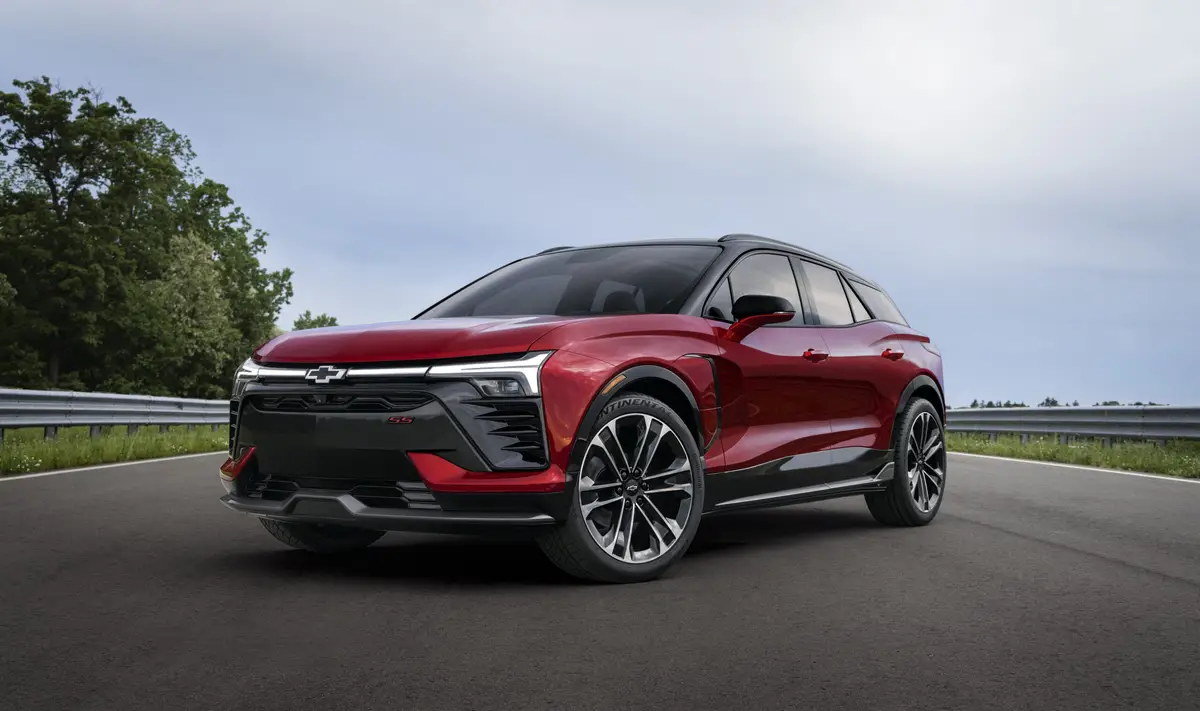2004 Volkswagen Passat: What's New
Vehicle Overview
Redesigned and dubbed the New Passat, Volkswagen’s midsize sedan and wagon went on sale as 2001.5 models. For 2003, Volkswagen’s 170-horsepower, turbocharged 1.8-liter engine became standard in the GL trim level. An Electronic Stability Program became optional in GL, GLS 1.8T (turbo) and GLX models.
For the 2004 model year, the upscale GLX edition adds the Electronic Stability Program along with a telematics system. A Monsoon stereo and a HomeLink universal garage-door opener become standard on the midlevel GLS. Late in the 2004 model year, a new 2.0-liter TDI (diesel) engine that produces 134 hp and 247 pounds-feet of torque became available, but only in 45 states.
Built as a front-wheel-drive model, the Passat also comes with 4Motion all-wheel drive. Early in 2002, Volkswagen introduced the Passat W8.
(Skip to details on the: Passat Wagon | Passat W8 Sedan | Passat W8 Wagon)
Exterior
Body-colored bumpers have a black lower section, and the sharply raked black grille contains a pronounced center logo. Halogen projector-lens fog lamps are integrated into the front bumper. The taillights are fully transparent and encompass two small round lenses.
Helped by a space-saving hinge, the sedan has 15 cubic feet of trunk capacity; cargo capacity decreases in models equipped with all-wheel drive. Steel wheels on GLS models hold 15-inch tires, but alloy wheels are optional. Alloy wheels on the GLX carry 16-inch tires.
Interior
Five people fit inside each Passat model. The sedans and wagons are equipped with reclining seats up front and a benchlike 60/40-split, folding rear seat. When equipped with 4Motion all-wheel drive, the backseat has a folding armrest with a pass-thru provision.
The gauges have brushed-aluminum accents and the familiar Volkswagen blue lighting at night. An Immobilizer II anti-theft system prevents start-up unless a properly coded key is used.
Under the Hood
Volkswagen’s 170-hp, turbocharged 1.8-liter inline-four-cylinder engine goes into the GL and GLS 1.8T. The GLS 2.8 V6 and GLX carry a 190-hp, 2.8-liter V-6 with variable valve intake timing. Both engines require premium fuel. A five-speed-manual transmission is standard, and an optional five-speed Tiptronic automatic allows for manually selected gear changes. The new 2.0-liter four-cylinder turbo-diesel engine produces 134 hp and 247 pounds-feet of torque, with an EPA fuel-economy rating of 27 mpg city and 38 mpg highway.
Safety
Six airbags are standard: two in the front, two for side-impact protection and two side curtain-type airbags. All-disc antilock brakes, daytime running lights and child-safety seat tether anchorage points for the rear seating positions are standard. Traction control is standard in front-drive models.
Passat Wagon
In wagon form, the Passat differs little from its sedan counterpart. Cargo capacity is 39 cubic feet behind the rear seat and 56.5 cubic feet with that seat folded down. Four-wheel-drive wagons have slightly less cargo volume. Back to top
Passat W8 Sedan
Volkswagen moved assertively upscale during 2002 by making the Passat available with a brand-new eight-cylinder engine. As the name suggests, the 270-hp, 4.0-liter W-8 engine has a “W,” or “double V,” design. No engine like it is on sale in the United States. Sedan and wagon versions of the Passat W8 are available, and they are equipped with a five-speed-automatic transmission that offers a Tiptronic manual-shifting provision. A six-speed-manual gearbox is optional.
With a W-8 engine under its hood, the Passat turns from an excellent road car into a superior, highly satisfying highway machine, which yields a refined driving experience. You can expect sterling performance and vigorous acceleration at all speeds — though some critics suggest that the engine could use more low-end torque for faster starts from a standstill. Back to top
Passat W8 Wagon
Except for the wagon body style, the Passat W8 wagon differs little from its sedan equivalent. Back to top
Driving Impressions
Everything about the Passat is smooth and easy. This sedan is one of the smoothest-riding vehicles in its league. The suspension is taut, but it absorbs moderate bumps handily with no sense of overreaction even when the going gets rough.
The V-6 engine is exceptionally quiet and delivers more than ample acceleration. Automatic-transmission response is crisp and positive. Volkswagen’s inline-four-cylinder engine is more coarse during hard acceleration and exhibits some lack of push at relatively low speeds; but otherwise, it’s as energetic as many V-6s.
The Passat steers with a moderate touch and excellent precision, but it’s just a trifle slow to respond at times. It hangs tight in curves with a tenacious grip and displays minimal body lean. Every element of assembly comes across as A-1.
Because Volkswagen has used diesel engines for years in its compact Jetta series, one would expect the Passat diesel to be wholly satisfying. Sadly, that’s not the case. Performance is acceptable, if tame. There’s little evidence that a diesel engine is under the hood in ordinary cruising, though modest upgrades hint at the fact. With the window open, you can clearly hear the diesel-engine sound.
More important, the diesel-engine powertrain in two early Passats stumbled periodically — sometimes when the automatic transmission shifted — delivering an annoying shudder. One sedan was distressingly noisy and exhibited significant vibration at idle. Diesel drivability is a major concern, so we’ll need more time before we can provide a definitive evaluation.
Featured stories



